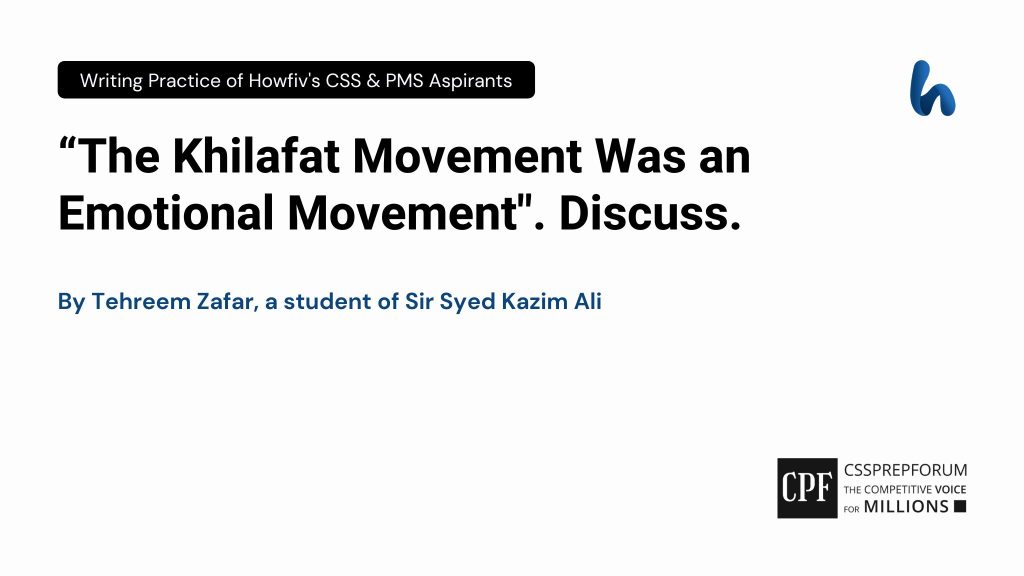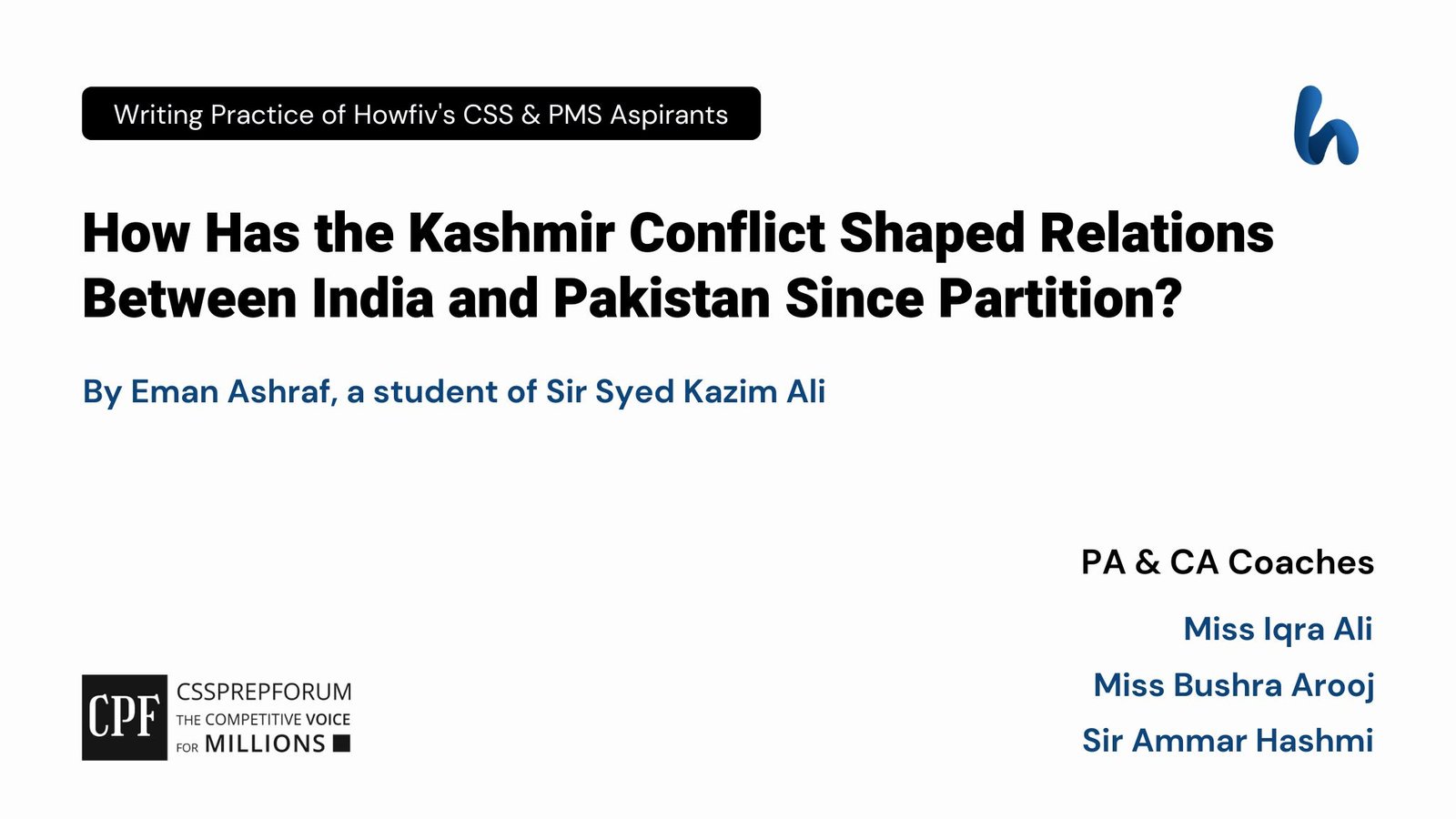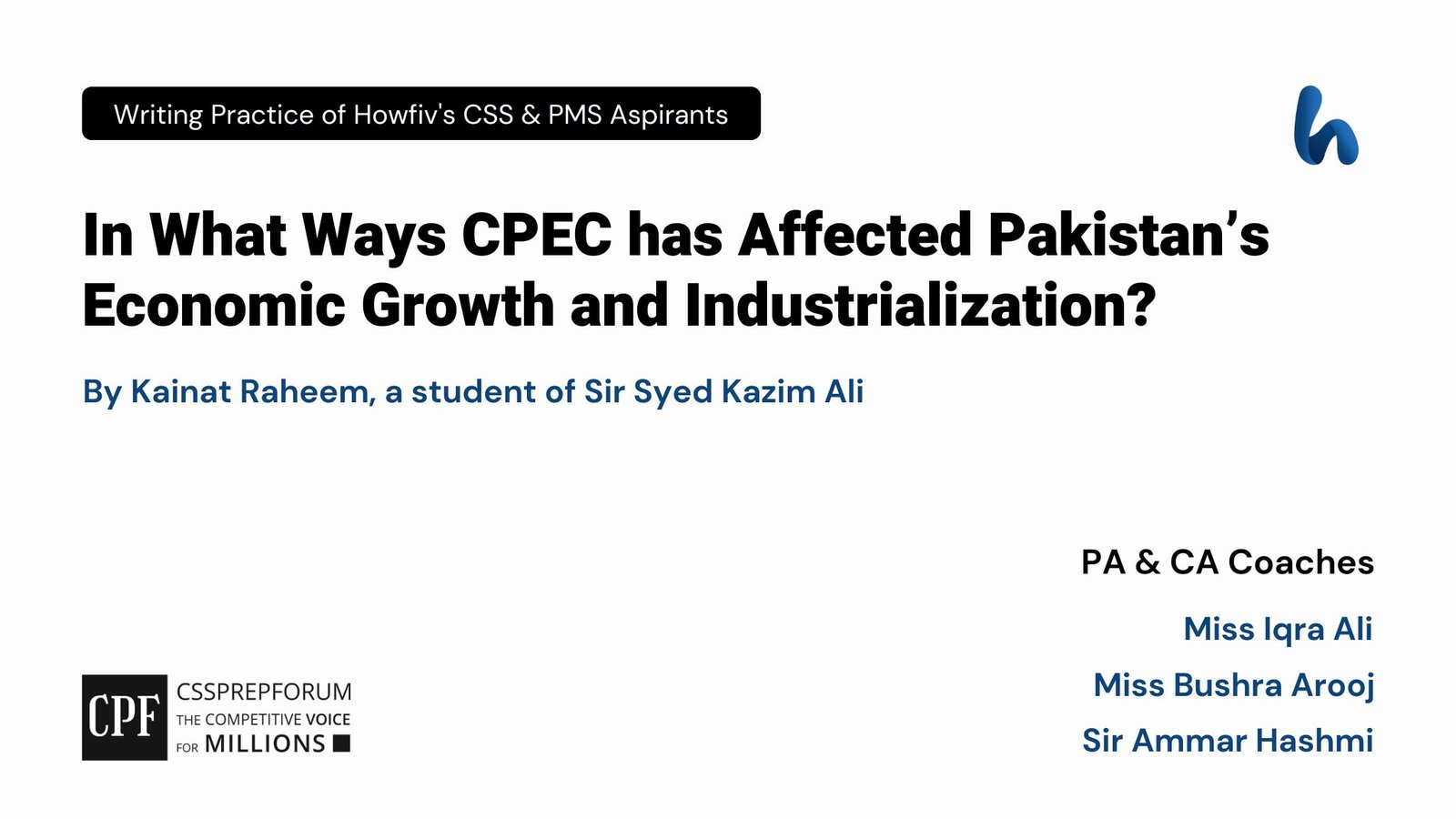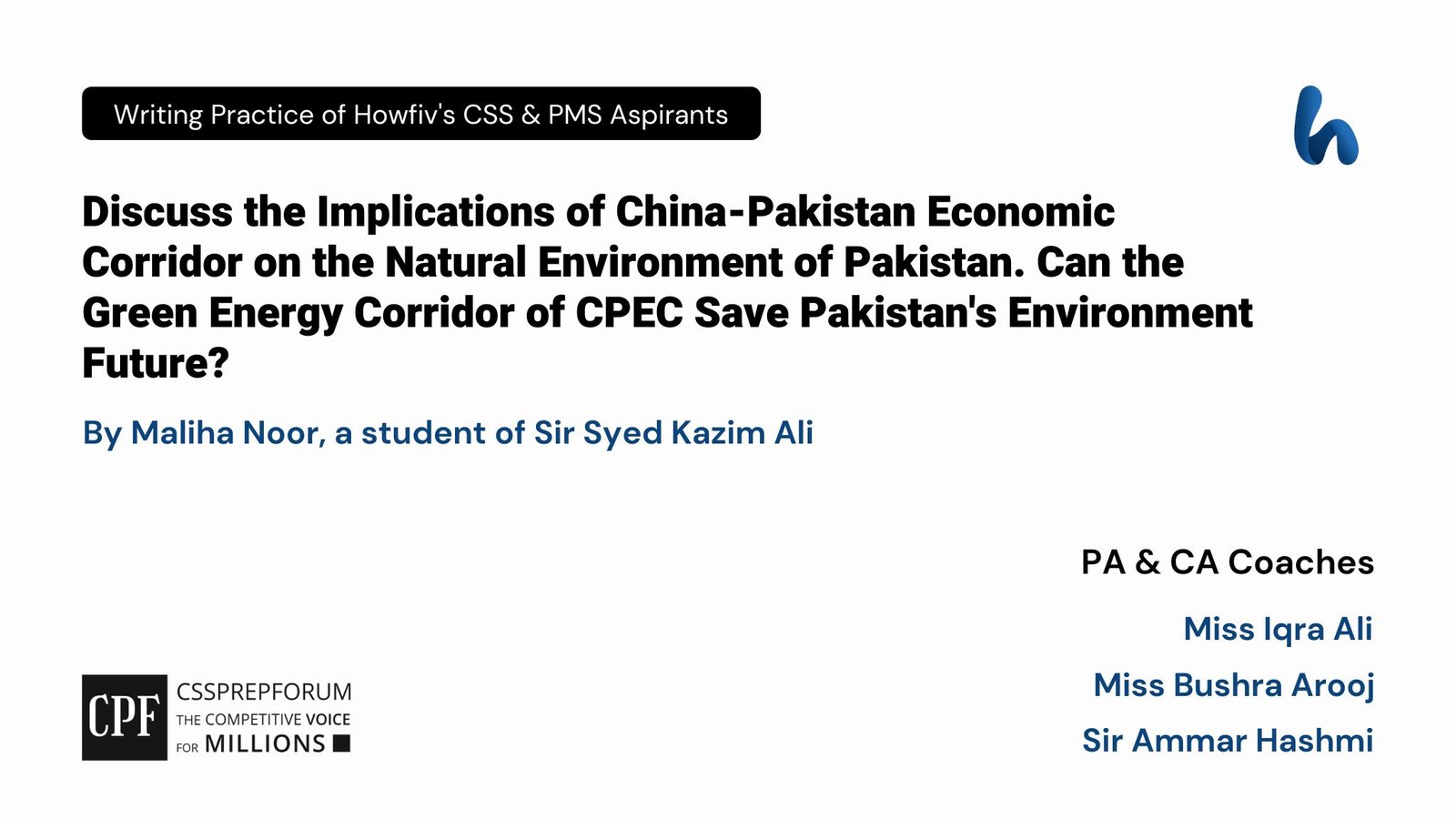The following article, ““The Khilafat Movement Was an Emotional Movement”. Discuss.“, is written by Tehreem Zafar, a student of Sir Syed Kazim Ali. Moreover, the article is written on the same pattern, taught by Sir to his students, scoring the highest marks in compulsory subjects for years. Sir Kazim has uploaded his students’ solved past paper questions so other thousands of aspirants can understand how to crack a topic or question, how to write relevantly, what coherence is, and how to include and connect ideas, opinions, and suggestions to score the maximum.

Outline
1-Introduction
Khilafat Movement was sheer emotionalism surrounding the movement that had falsely created the notion of a universal caliphate, ignored the institution of Ijtihad, employed mob mentality, and fostered extremist and violent politics in the Subcontinent.
2-Historical Overview: The then-factors responsible for the Khilafat movement
- ✓The occupation of the empire’s territory by the Allied countries
- ✓The partitioning of the Ottoman Empire and giving Greece a powerful position in Anatolia
- ✓The brutal policies adopted by the British in the early twentieth century
- ✓The amalgamation of Indian Nationalist and Pan-Islamist activities
- ✓The emotionalism factor among Indian Muslims
3- What are the prime movers that make the Khilafat Movement an emotional one?
- ✓ Emotionalism against the false idea of the universal caliphate in the movement
- Case in point: The Mughals, as written in Akbarnama, would get themselves called Khalifas, as did the Timurids, negating the idea of a universal caliphate.
- ✓ Ignorance of the institution of Ijtihad in the movement
- Case in point: According to Allama Iqbal, the institution of Ijtihad as practised by the Young Turks, who were instrumental in abolishing the Caliphate in Turkey, in formulating a republican form of government was but a rational choice of the Muslims.
- ✓ Reflection of religious fanaticism reflected in the movement
- Case in point: In the Nasik District of Bombay in 1921, riots erupted between the people of the non-cooperation movement of Gandhi and the moderators who opposed the former’s decision to boycott the visit of the Prince of Wales in November 1921.
4- Conclusion

Answer to the Question
Introduction
The Muslim community in the Indian Subcontinent, through its untiring leadership in the previous centuries, has fought rationally in times of spiritual, political, and social crises. However, the struggle to preserve the Khalifat proved highly emotive, leaving the Muslim community in the lurch. Muslims in the Subcontinent have never taken for granted their Islamic character, whether it was the Millennium movement of Sheikh Ahmed Sirhindhi against the adulterated Islamic theology, the Jihad movement by Syed Ahmed Barelvi against the Sikhs’ brutal rule, or, more importantly, the Pakistan Movement against the majoritarian Hindus. The Muslim leadership has fought with remarkable courage. Historically, the Khilafat Movement took its basis from the British intent to abolish the Ottoman Caliphate. This political and spiritual institution was highly esteemed by the Muslims of India, especially the religious figures. Khilafat Movement was sheer emotionalism surrounding the movement that had falsely created the notion of a universal caliphate, ignored the institution of Ijtihad, employed mob mentality, and fostered extremist and violent politics in the Subcontinent. To begin with, Khilafatists’ emotional attachment to the Islamic universal caliphate has no basis in Muslim history. In addition, such was the fervour in the movement that it ignored the institution of Ijtihad or independent reasoning. Moreover, the religious rhetoric, the biggest weapon in the campaign, brought irreparable damage to the Muslims in the form of the Hijrat Movement. Last, the religious symbolism in the movement, as emotional as populist, amalgamated religion and politics, leading to a marked level of political religiosity among the religious communities in India.

The prime movers that make the Khilafat Movement an emotional one
The irrational, unconducive role of Muslims and the demonstrated impracticable idea of preserving the moribund Khilafat further added to the problems faced by the Muslim community in the Subcontinent, moving an emotional one.
Emotionalism against the false idea of the universal caliphate in the movementThe idea behind preserving Ottoman Khilafat as a universal caliphate was against the verdict of history. To elaborate, per the Khilafatist’s notion of a universal caliphate, there should be a Khalifa who belongs to the Quraysh tribe that would defend the land of Islam and look after the affairs of Muslims, both temporal and spiritual. However, the idea of a universal caliphate had no basis in Muslim history, and the movement’s vehement support was nothing but emotionalism. In reality, the primitive notion of universal Khalifa stretched back in South Asia to the pre-Mughal rule. The rulers in the Delhi Sultanate, according to Aziz Ahmed, would draw legitimacy from the Abbasids. However, as written in Akbarnama, the Mughals would themselves call Khalifa, and so did the Timurids, negating the idea of a universal caliphate. In addition, the Ottomans divested themselves of universal caliphs as early as the eighteenth century. Hence, the efforts of Indian Muslims were completely an emotional move.
Ignorance of the institution of Ijtihad in the movement
The Khilafatists’ aspirations to preserve the Ottoman Empire were tantamount to promoting a monarchical system and Arab imperialism instead of supporting republicanism through Ijtihad. Although most Indian Muslims saw a setback in the dissolution of the Khilafat, some thinkers believed in the contrary, like Allama Muhammad Iqbal, who viewed supporting the Ottoman Empire as tantamount to nothing but the fermentation of the Muslim thought. In “The Reconstruction of Religious Thought in Islam”, Iqbal lamented the role of the caliphate system on Muslim political thought and declared it an instrument of Arab Imperialism. Regarding the clergy’s negation of Ijtihad, Iqbal commented, “The religious doctors of Islam in Egypt and India, as far as I know, have not yet expressed themselves on this point. The Turkish view [the abolition of caliphate] is perfectly sound.” To him, the institution of Ijtihad, as practised by the Young Turks, who were instrumental in abolishing the Caliphate in Turkey in formulating a republican form of government, was a rational choice of the Muslims. He wrote, “The republican form of government is not only thoroughly consistent with the spirit of Islam, but has also become a necessity given the new forces that were set free in the world of Islam.” Therefore, Iqbal’s perspective on the Khilafat issue was based on the realities of the time, not effusive and archaic notions of the then clergy.
Reflection of religious fanaticism reflected in the movement
The excessive use of emotional symbolism fused religion and politics, leading to a perpetual spat of violence in the Subcontinent. The movement, for the first time in the modern political arena, introduced the clergy to the political affairs of the Muslims, leading to several religious outfits, such as Jamiat-e-Ulama-e-Hind in 1919, Jamia Millia Islamia in 1920, and Tablighi Jumaat in 1926, which resulted in the very formation of some Hindu revivalist movements, like Shuddhi and Sanghathan Movement in 1923, and Rashtriya Swayamsevak Sangh (RSS) in 1925. As a result, the use of religious rhetoric present in the Khilafat movement, to a large extent, contributed to Hindu-Muslim riots in several localities of India, such as in Kohat, Calcutta, and Kanpur. To specify, in the Nasik District of Bombay in 1921, riots erupted between the people of the non-cooperation movement of Gandhi and the moderators who opposed the former’s decision to boycott the visit of the Prince of Wales in November 1921. In addition, Jinnah was not only against amalgamating religion with politics on the eve of the Khilafat Movement but also anticipated that it would create hatred among the followers of different religions. His refusal to be part of the Khilafat movement made him resign from Congress in the December 1920 Nagpur session. In brief, the violence and extremist tendencies introduced by the movement exemplify the emotional factor involved in the agitation.
Conclusion
To sum up, the Khilafat movement was as emotional as both Iqbal and Jinnah perceived it. The universality of a caliph, after the demise of the four guided caliphs, in Muslim history was not a rule but an exception and, thus, a part of the emotional baggage that the Khlifatists carried throughout the agitation. The non-cooperation strategy against the British government and the outcome of emotional appeal to the masses brought tremendous hardship to the Muslim communities in India. The religious rhetoric in the movement drastically changed the political life in the Subcontinent by infusing religious sentiment into body politic. Notwithstanding its indelible repercussions on the Muslims of the Subcontinent due to its emotive factor, the ultimate failure of the movement made people realise the political acumen of Jinnah, who spearheaded a national movement for the preservation of Muslim nationalism in the Subcontinent through his constitutionalist line of actions. In a word, the ardent supporters of the Khilafat movement were against the spirit of the times and short of a rational approach.

CSS Solved Past Papers’ Essays
Looking for the last ten years of CSS and PMS Solved Essays and want to know how Sir Kazim’s students write and score the highest marks in the essays’ papers? Then, click on the CSS Solved Essays to start reading them.
CSS Solved Essays
CSS Solved General Science & Ability Past Papers
Want to read the last ten years’ General Science & Ability Solved Past Papers to learn how to attempt them and to score high? Let’s click on the link below to read them all freely. All past papers have been solved by Miss Iqra Ali & Dr Nishat Baloch, Pakistan’s top CSS GSA coach having the highest score of their students. General Science & Ability Solved Past Papers
Articles Might Interest You!
The following are some of the most important articles for CSS and PMS aspirants. Click on any to start reading.












